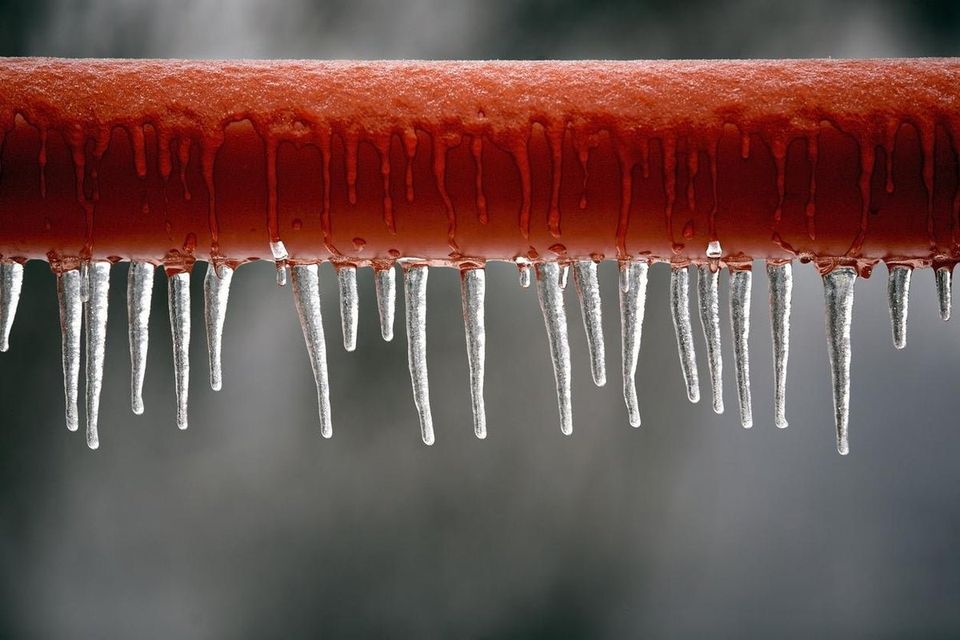Ways to Protect Pipes from Freezing: Specialist Guidance
Ways to Protect Pipes from Freezing: Specialist Guidance
Blog Article
Were you trying to find resources on 6 Ways to Prevent Frozen Pipes?

Cold weather can ruin your pipes, especially by freezing pipes. Below's just how to prevent it from happening and what to do if it does.
Intro
As temperatures decline, the danger of icy pipelines rises, possibly leading to pricey repair work and water damage. Recognizing exactly how to prevent icy pipelines is important for house owners in cold environments.
Prevention Tips
Shielding susceptible pipes
Cover pipes in insulation sleeves or make use of warmth tape to secure them from freezing temperature levels. Concentrate on pipes in unheated or exterior locations of the home.
Home heating methods
Keep interior areas properly warmed, specifically locations with pipes. Open up cupboard doors to allow warm air to circulate around pipes under sinks.
How to identify icy pipelines
Look for decreased water circulation from taps, unusual odors or sounds from pipes, and noticeable frost on revealed pipelines.
Long-Term Solutions
Architectural modifications
Take into consideration rerouting pipes away from exterior walls or unheated areas. Add additional insulation to attic rooms, cellars, and crawl spaces.
Updating insulation
Purchase top notch insulation for pipelines, attics, and walls. Appropriate insulation helps preserve constant temperatures and decreases the danger of frozen pipes.
Protecting Outside Plumbing
Yard hoses and outdoor taps
Disconnect and drain yard pipes before winter. Set up frost-proof spigots or cover outside taps with protected caps.
Recognizing Icy Pipelines
What triggers pipelines to ice up?
Pipelines ice up when subjected to temperatures listed below 32 ° F (0 ° C) for prolonged durations. As water inside the pipes freezes, it expands, putting pressure on the pipeline wall surfaces and potentially triggering them to burst.
Dangers and damages
Frozen pipelines can lead to supply of water disturbances, property damages, and costly repair services. Ruptured pipelines can flooding homes and cause comprehensive structural damages.
Signs of Frozen Piping
Identifying frozen pipes early can prevent them from rupturing.
What to Do If Your Pipes Freeze
Immediate actions to take
If you think frozen pipes, keep taps available to relieve pressure as the ice thaws. Utilize a hairdryer or towels taken in hot water to thaw pipes gradually.
Conclusion
Avoiding frozen pipes requires proactive actions and quick feedbacks. By comprehending the reasons, indications, and safety nets, property owners can secure their pipes throughout cold weather.
Helpful Tips to Prevent Frozen Pipes this Winter
UNDERSTANDING THE BASICS: WHY PIPES FREEZE AND WHY IT’S A PROBLEM
Water freezing inside pipes is common during the winter months, but understanding why pipes freeze, and the potential problems it can cause is crucial in preventing such incidents. This section will delve into the basics of why pipes freeze and the associated problems that may arise.
THE SCIENCE BEHIND FROZEN PIPES
When water reaches freezing temperatures, it undergoes a physical transformation and solidifies into ice. This expansion of water as it freezes is the primary reason pipes can burst. As the water inside the pipe freezes, it expands, creating immense pressure on the walls. If the pressure becomes too great, the pipe can crack or rupture, leading to leaks and water damage.
FACTORS THAT CONTRIBUTE TO PIPE FREEZING
Low Temperatures: Extremely cold weather, especially below freezing, increases the risk of pipes freezing. Uninsulated or Poorly Insulated Pipes: Pipes located in unheated areas, such as basements, crawl spaces, or attics, are more prone to freezing. Insufficient insulation or lack of insulation altogether exacerbates the problem. Exterior Wall Exposure: Pipes running along exterior walls are susceptible to freezing as they encounter colder temperatures outside. Lack of Heating or Temperature Regulation: Inadequate heating or inconsistent temperature control in your home can contribute to frozen pipes. PROBLEMS CAUSED BY FROZEN PIPES
- Pipe Bursting: As mentioned earlier, the expansion of water as it freezes can cause pipes to burst, resulting in significant water damage.
- Water Damage: When pipes burst, it can lead to flooding and water damage to your property, including walls, ceilings, flooring, and personal belongings.
- Structural Damage: Prolonged exposure to water from burst pipes can compromise the structural integrity of your home, leading to costly repairs.
- Mold and Mildew Growth: Excess moisture from water damage can create a favorable environment for mold and mildew growth, posing health risks to occupants.
- Disrupted Water Supply: Frozen pipes can also result in a complete or partial loss of water supply until the issue is resolved.
WHY CERTAIN PIPES ARE MORE PRONE TO FREEZING
- Location: Pipes located in unheated or poorly insulated areas, such as basements, crawl spaces, attics, or exterior walls, are at higher risk of freezing.
- Exterior Pipes: Outdoor pipes, such as those used for irrigation or exposed plumbing, are particularly vulnerable to freezing as they are directly exposed to the elements.
- Supply Lines: Pipes that carry water from the main water supply into your home, including the main water line, are critical to protect as freezing in these lines can affect your entire plumbing system.
- Underground Pipes: Pipes buried underground, such as those connected to sprinkler systems or outdoor faucets, can be susceptible to freezing if not properly insulated.
https://busybusy.com/blog/helpful-tips-to-prevent-frozen-pipes-this-winter/

We had been guided to that report about Helpful Tips to Prevent Frozen Pipes this Winter through a buddy on a different web blog. Enjoyed reading our write up? Please quickly share it. Let others locate it. Many thanks for your time spent reading it.
Give Me A Quote! Report this page